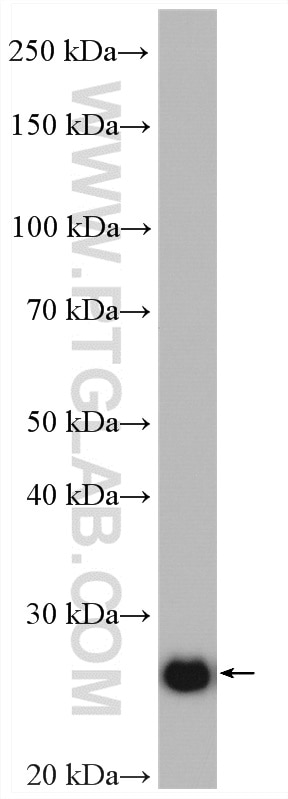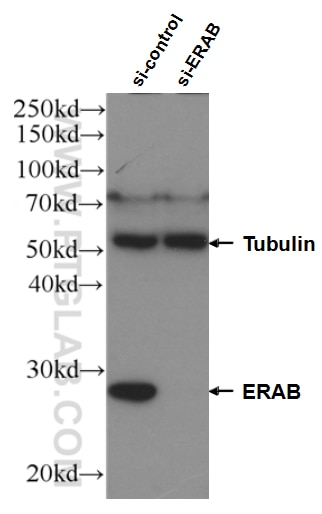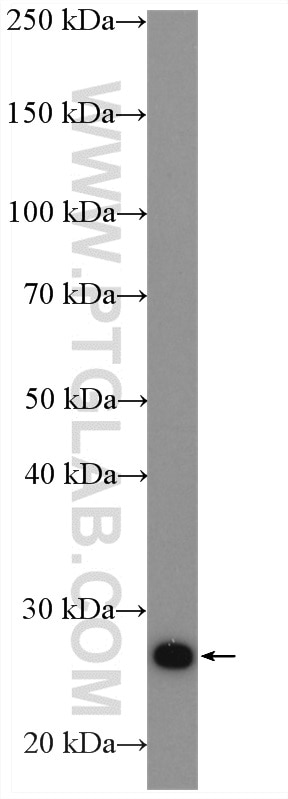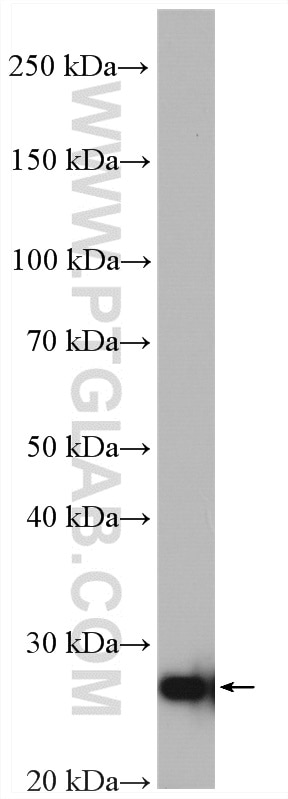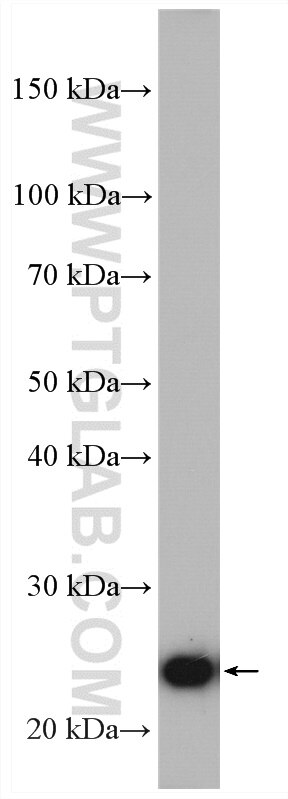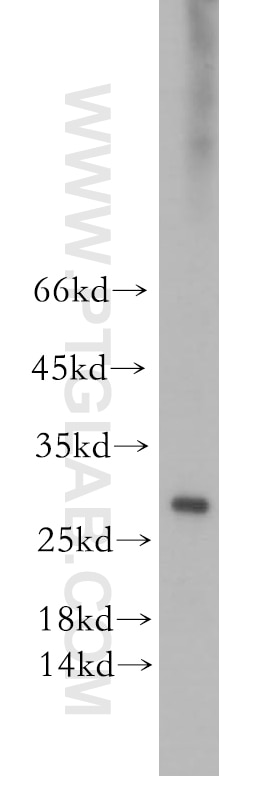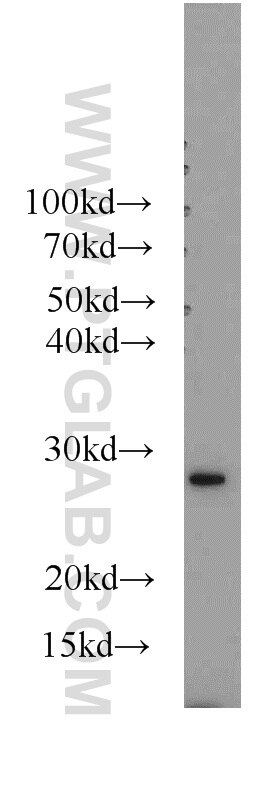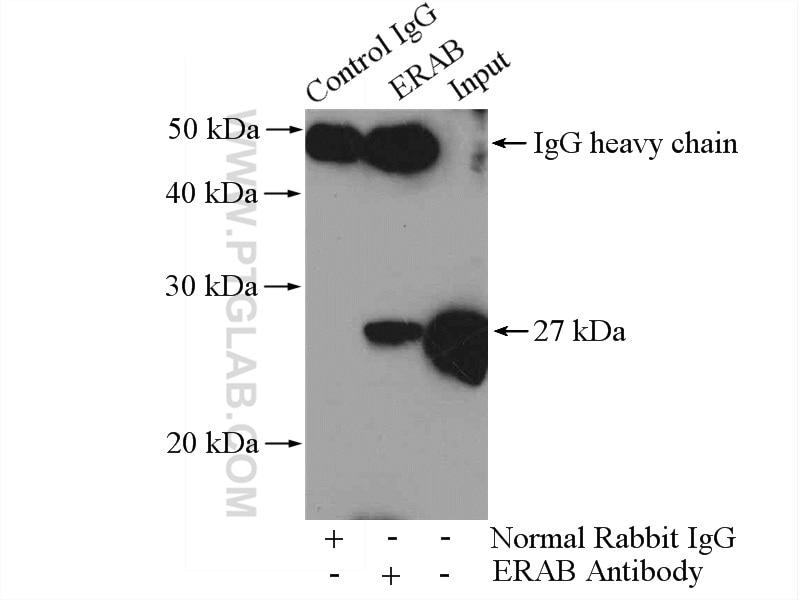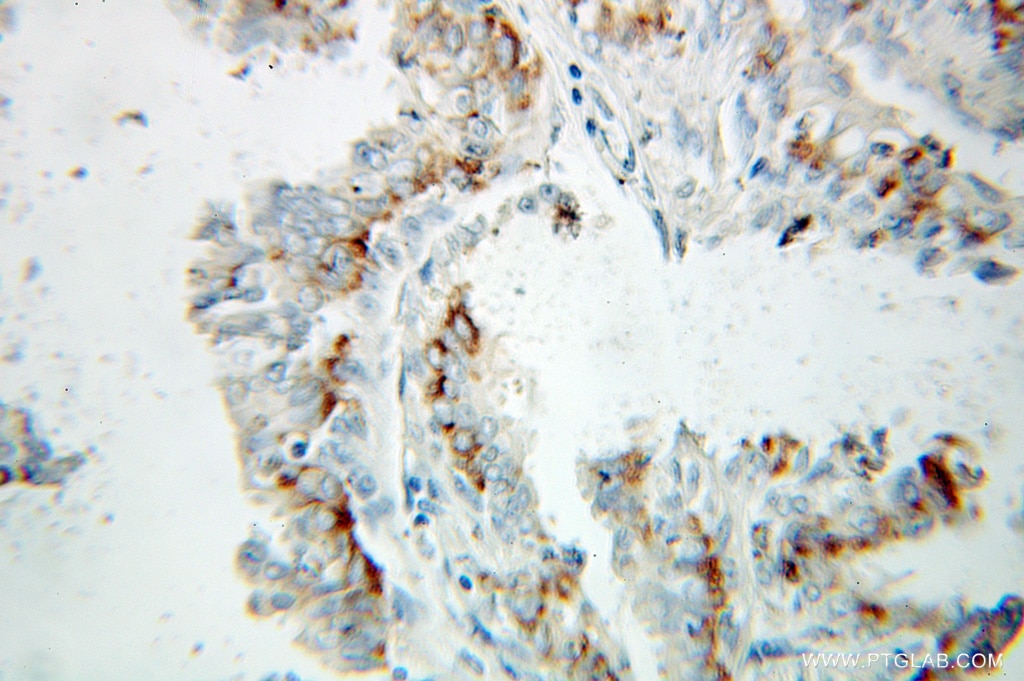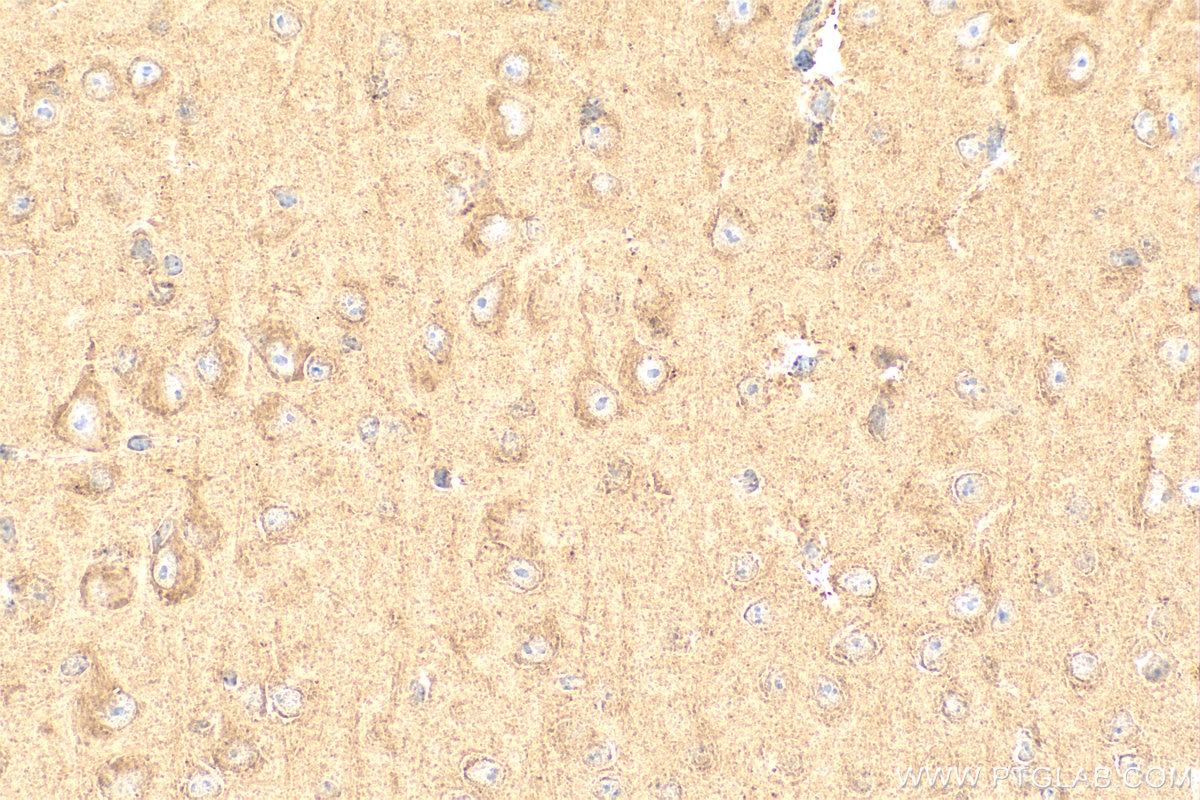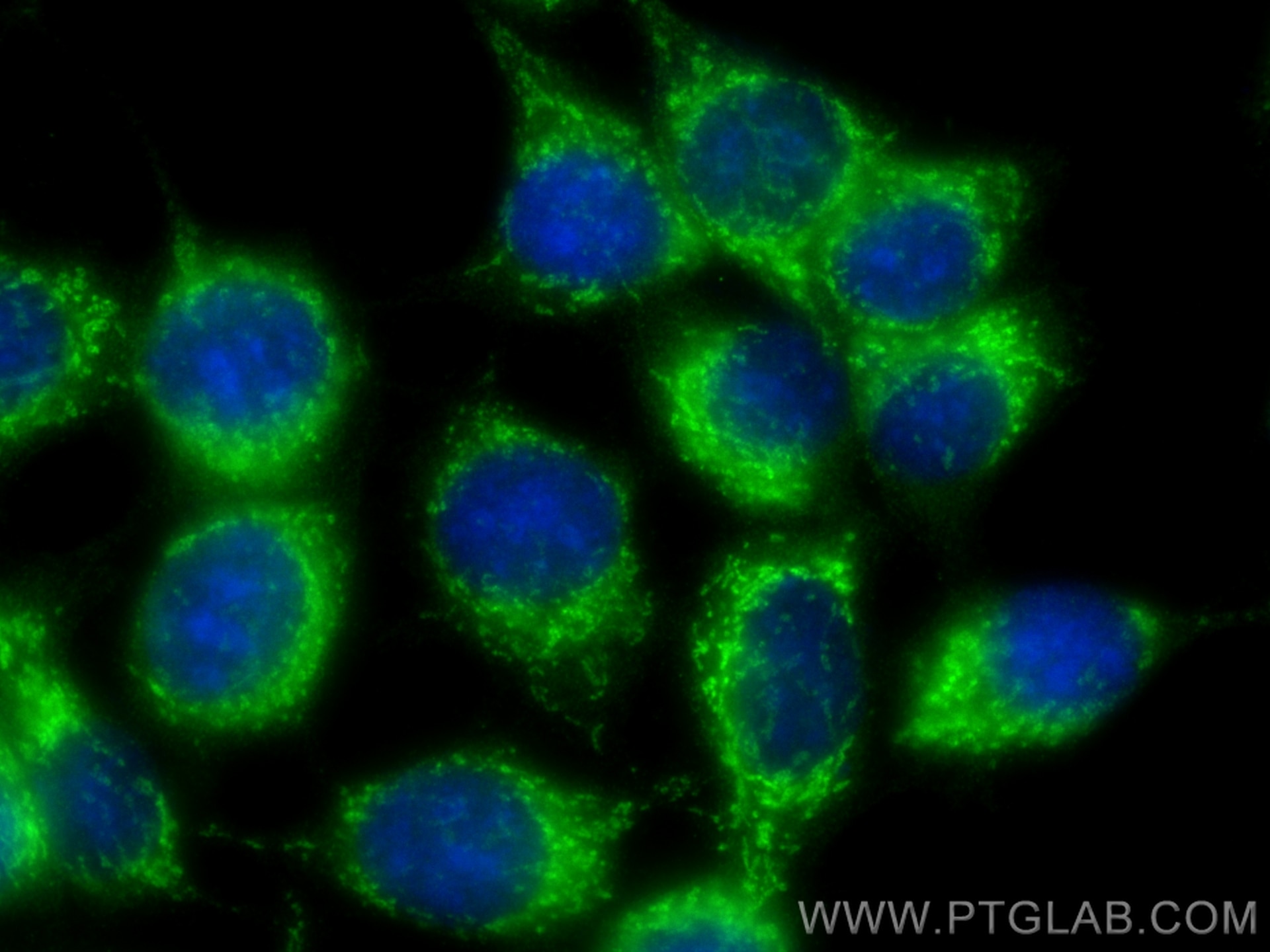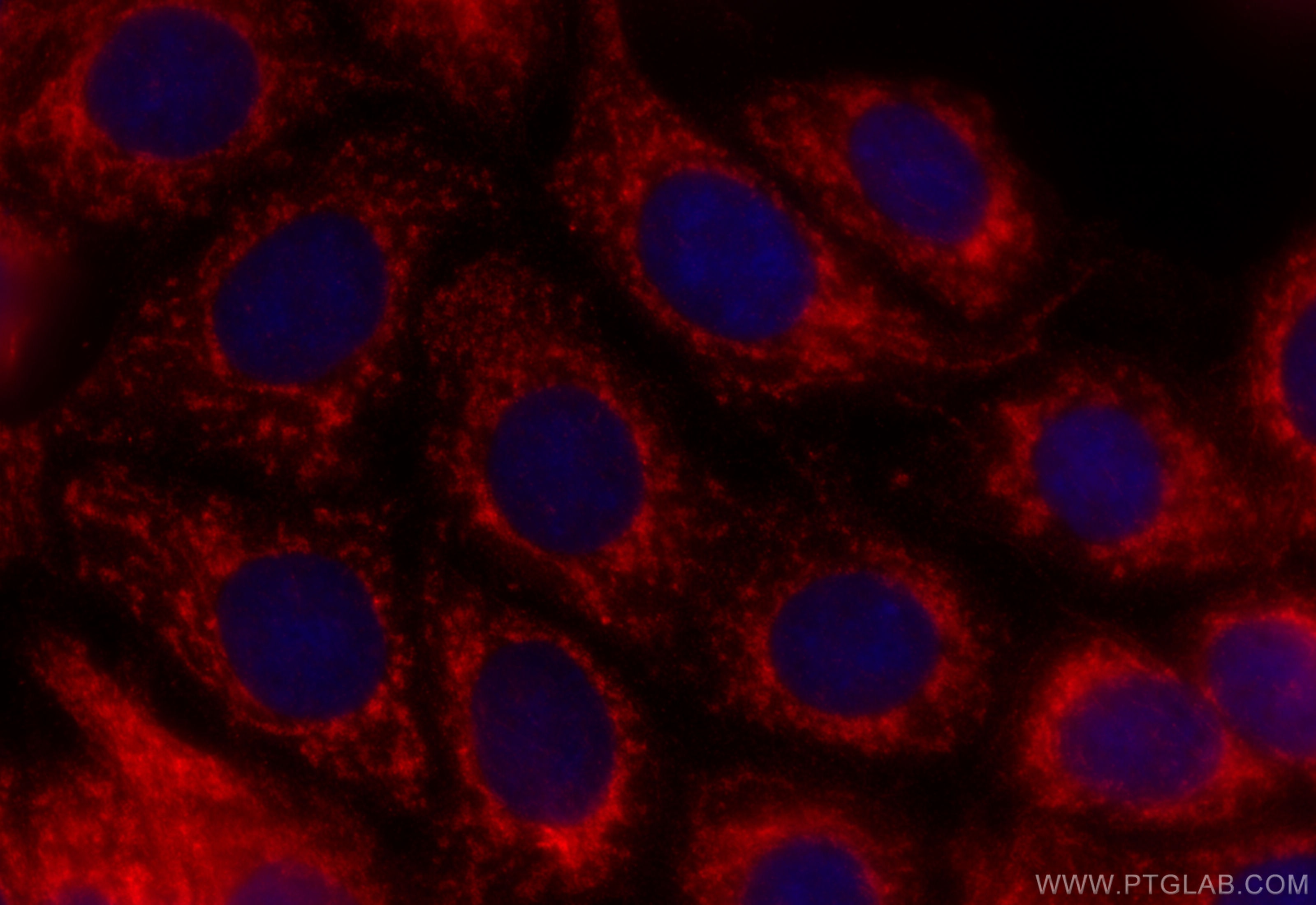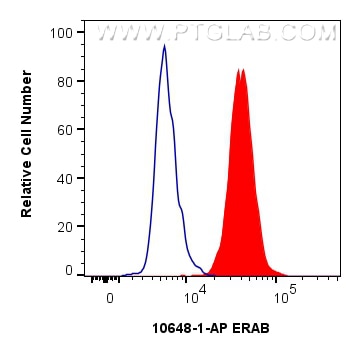Tested Applications
| Positive WB detected in | HeLa cells, human brain tissue, HEK-293 cells, A2780 cells, mouse liver tissue |
| Positive IP detected in | HeLa cells |
| Positive IHC detected in | human breast cancer tissue, mouse brain tissue Note: suggested antigen retrieval with TE buffer pH 9.0; (*) Alternatively, antigen retrieval may be performed with citrate buffer pH 6.0 |
| Positive IF/ICC detected in | MCF-7 cells |
| Positive FC (Intra) detected in | MCF-7 cells |
Recommended dilution
| Application | Dilution |
|---|---|
| Western Blot (WB) | WB : 1:1000-1:3000 |
| Immunoprecipitation (IP) | IP : 0.5-4.0 ug for 1.0-3.0 mg of total protein lysate |
| Immunohistochemistry (IHC) | IHC : 1:20-1:200 |
| Immunofluorescence (IF)/ICC | IF/ICC : 1:50-1:500 |
| Flow Cytometry (FC) (INTRA) | FC (INTRA) : 0.25 ug per 10^6 cells in a 100 µl suspension |
| It is recommended that this reagent should be titrated in each testing system to obtain optimal results. | |
| Sample-dependent, Check data in validation data gallery. | |
Published Applications
| WB | See 7 publications below |
| IP | See 1 publications below |
Product Information
10648-1-AP targets ERAB in WB, IHC, IF/ICC, IP, ELISA applications and shows reactivity with human, mouse, rat samples.
| Tested Reactivity | human, mouse, rat |
| Cited Reactivity | human, mouse, rat |
| Host / Isotype | Rabbit / IgG |
| Class | Polyclonal |
| Type | Antibody |
| Immunogen |
CatNo: Ag1020 Product name: Recombinant human HSD17B10 protein Source: e coli.-derived, PGEX-4T Tag: GST Domain: 1-252 aa of BC008708 Sequence: MAAACRSVKGLVAVITGGASGLGLATAERLVGQGASAVLLDLPNSGGEAQAKKLGNNCVFAPADVTSEKDVQTALALAKGKFGRVDVAVNCAGIAVASKTYNLKKGQTHTLEDFQRVLDVNLMGTFNVIRLVAGEMGQNEPDQGGQRGVIINTASVAAFEGQVGQAAYSASKGGIVGMTLPIARDLAPIGLFGTPLLTSLPEKVCNFLASQVPFPSRLGDPAEYAHLVQAIIENPFLNGEVIRLDGAIRMQP Predict reactive species |
| Full Name | hydroxysteroid (17-beta) dehydrogenase 10 |
| Calculated Molecular Weight | 26 kDa |
| Observed Molecular Weight | 27 kDa |
| GenBank Accession Number | BC008708 |
| Gene Symbol | ERAB |
| Gene ID (NCBI) | 3028 |
| RRID | AB_2264270 |
| Conjugate | Unconjugated |
| Form | Liquid |
| Purification Method | Antigen affinity purification |
| UNIPROT ID | Q99714 |
| Storage Buffer | PBS with 0.02% sodium azide and 50% glycerol, pH 7.3. |
| Storage Conditions | Store at -20°C. Stable for one year after shipment. Aliquoting is unnecessary for -20oC storage. 20ul sizes contain 0.1% BSA. |
Background Information
HSD17B10 (3-hydroxyacyl-CoA dehydrogenase type-2) is a multifunctional mitochondrial enzyme that acts on a wide spectrum of substrates, including neuroactive steroids, alcohols, leucine, and fatty acids, with a preference for short-chain methyl-branched acyl-CoAs(PMID:15860413).It has 2 isoforms produced by alternative splicing.Defects in HSD17B10 are the cause of 2-methyl-3-hydroxybutyryl-CoA dehydrogenase deficiency (MHBD deficiency) and mental retardation syndromic X-linked type 10 (MRXS10).
Protocols
| Product Specific Protocols | |
|---|---|
| IF protocol for ERAB antibody 10648-1-AP | Download protocol |
| IHC protocol for ERAB antibody 10648-1-AP | Download protocol |
| IP protocol for ERAB antibody 10648-1-AP | Download protocol |
| WB protocol for ERAB antibody 10648-1-AP | Download protocol |
| Standard Protocols | |
|---|---|
| Click here to view our Standard Protocols |
Publications
| Species | Application | Title |
|---|---|---|
Hum Mol Genet Leber's hereditary optic neuropathy (LHON)-associated ND6 14 484 T > C mutation caused pleiotropic effects on the complex I, RNA homeostasis, apoptosis and mitophagy. | ||
Endocrinology Wnt16 Promotes Vascular Smooth Muscle Contractile Phenotype and Function via Taz (Wwtr1) Activation in Male LDLR-/- Mice | ||
J Oleo Sci Effects of Dietary Fat Restriction on Endurance Training-induced Metabolic Adaptations in Rat Skeletal Muscle. | ||
Circulation Stimulates Short-Chain Dehydrogenase/Reductase Proteins to Alleviate Heart Failure Independent of Mitochondrial Protein Deacetylation | ||
Gen Comp Endocrinol Testosterone regulates thymic remodeling by altering metabolic reprogramming in male rats |
